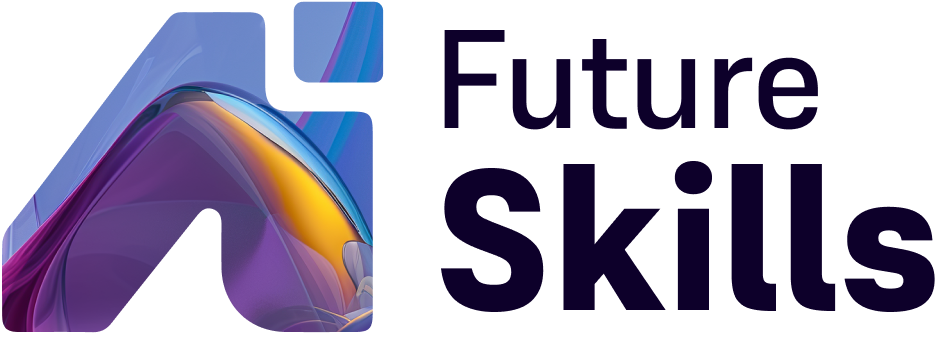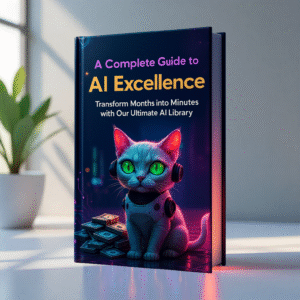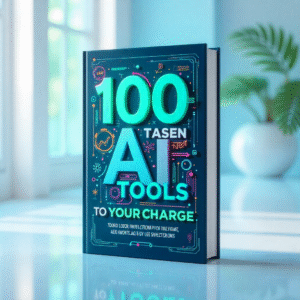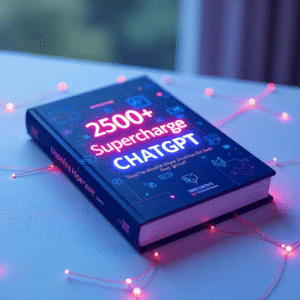AI Presentation Tools: Create Stunning Slides in Minutes
Learn how to create professional presentations 10x faster using AI tools. Discover prompts, templates, and techniques for stunning slide design.
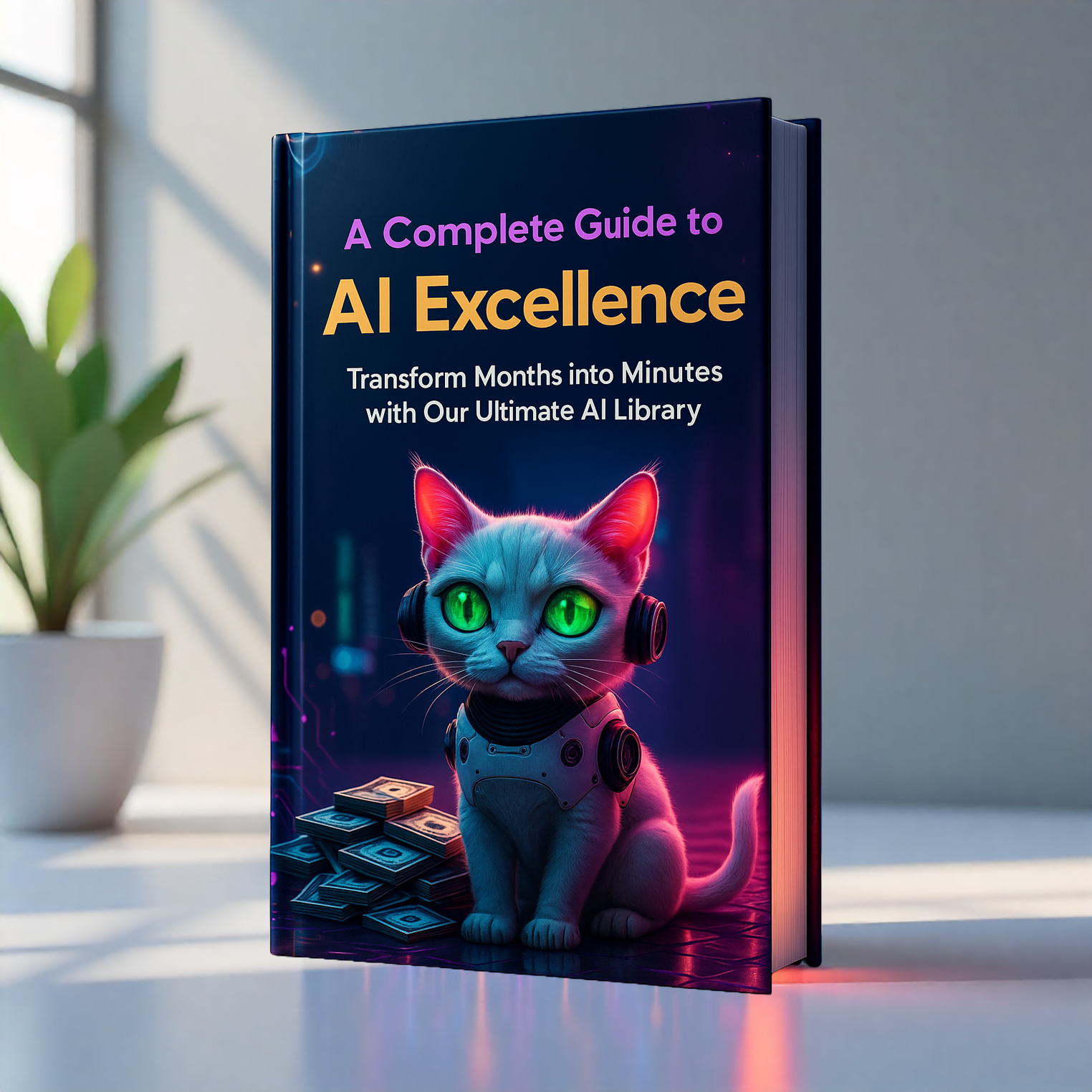
Creating compelling presentations traditionally requires hours of design work, content development, and formatting adjustments. With the emergence of AI presentation tools, professionals can now produce stunning, professional-quality slides in minutes rather than hours. This transformation is revolutionizing how businesses communicate ideas, pitch concepts, and share information.
Whether you’re preparing for a board meeting, client pitch, or conference presentation, AI-powered presentations offer unprecedented speed and quality. This comprehensive guide reveals proven strategies, tools, and techniques that leading professionals use to create presentations with AI that captivate audiences and drive results.
From automated slide design to intelligent content generation, you’ll discover how to leverage artificial intelligence to transform your presentation workflow and deliver exceptional visual communication consistently.
The Evolution of Presentation Creation
Traditional presentation development follows a time-intensive process: content planning (2-3 hours), slide design (3-4 hours), formatting consistency (1-2 hours), and final revisions (1-2 hours). This 7-11 hour investment per presentation creates bottlenecks for busy professionals and teams.
Modern AI slide generator technology has compressed this timeline dramatically. Advanced algorithms now handle design decisions, content structuring, and visual consistency automatically, reducing presentation creation time by up to 85% while maintaining professional quality standards.
Current Market Landscape
Traditional Tools Limitations:
- Manual design requires extensive formatting time
- Inconsistent visual styling across slides
- Limited template variety and customization
- Time-consuming content organization and flow
AI Presentation Maker Advantages:
- Automated design consistency throughout presentations
- Intelligent content structuring and flow optimization
- Real-time style and branding applications
- Instant template generation based on content analysis
Top AI Presentation Tools in 2025
Gamma: AI-Powered Design Intelligence
Gamma leads the AI presentation maker space with sophisticated design algorithms that create visually stunning presentations from simple text inputs. Users report 90% time savings compared to traditional PowerPoint workflows.
Key Features:
- One-click presentation generation from outlines
- Automatic brand consistency application
- Real-time collaborative editing with AI suggestions
- Advanced animation and transition automation
Best Use Cases: Executive presentations, sales pitches, educational content, and marketing materials.
Beautiful.AI: Smart Template Engine
Beautiful.AI combines artificial intelligence with professional design principles to ensure every slide maintains visual appeal and readability. The platform’s DesignIQ technology automatically adjusts layouts as content changes.
Standout Capabilities:
- Intelligent slide layout optimization
- Automatic color scheme generation
- Smart icon and image suggestions
- Real-time design rule enforcement
Tome: Narrative-Driven AI Presentations
Tome revolutionizes storytelling through AI by creating presentation narratives that flow logically and engage audiences effectively. The platform excels at transforming complex data into compelling visual stories.
Unique Strengths:
- AI-powered storytelling structure
- Automatic data visualization creation
- Context-aware content suggestions
- Interactive presentation elements
Essential AI Prompts for Presentation Creation
1. Presentation Structure and Outline Generator
Time Saved: 2-3 hours of planning
The Prompt: “Create a comprehensive presentation outline for [presentation topic] targeting [audience type]. The presentation should be [duration] long and achieve [primary objective]. Include: compelling opening hook, 5-7 main sections with key points, supporting evidence for each section, smooth transitions between topics, engaging conclusion with clear call-to-action, and suggested visual elements for each slide. Structure for maximum audience engagement and retention.”
Real-World Success: Jennifer, a startup founder, used this prompt to create a investor pitch outline in 15 minutes that previously took her 3 hours. Her structured approach helped secure $2.3M in Series A funding.
2. Executive Summary Slide Creator
Time Saved: 45-60 minutes per slide
The Prompt: “Transform this detailed information: [paste content/data] into a compelling executive summary slide. Create: powerful headline that captures the main message, 3-4 key bullet points with quantified results, one standout statistic or achievement, visual element suggestions (charts, icons, images), and speaking notes for presenter confidence. Ensure content is C-suite appropriate and decision-focused.”
3. Data Visualization Optimizer
Time Saved: 1-2 hours per chart
The Prompt: “Analyze this dataset: [provide data] and recommend the most effective visualization approach. Suggest: optimal chart type for the data story, color schemes that enhance readability, key insights to highlight, data labels and formatting recommendations, and slide layout suggestions. Include alternative visualization options for different audience preferences and presentation contexts.”
4. Brand-Consistent Design Generator
Time Saved: 1.5 hours per presentation
The Prompt: “Create a presentation design system for [company/brand] with these brand elements: [colors, fonts, logo usage]. Develop: slide master templates for different content types (title, content, comparison, data), consistent typography hierarchy, color palette application guidelines, logo placement standards, and visual element styling rules. Ensure professional appearance and brand recognition throughout.”
5. Audience-Specific Content Adapter
Time Saved: 2 hours of customization
The Prompt: “Adapt this presentation content: [existing content] for [new audience type] with [specific interests/concerns]. Modify: language and tone for audience sophistication level, examples and case studies relevant to their industry, technical depth appropriate for their expertise, pain points and benefits that resonate with their challenges, and call-to-action aligned with their decision-making process.”
Advanced AI Presentation Techniques
Dynamic Content Generation
Create presentations with AI that automatically update content based on real-time data sources. This technique is particularly valuable for sales teams, executives, and consultants who present similar content to different audiences.
Implementation Strategy: Connect AI presentation tools with your CRM, analytics platforms, or databases to automatically populate slides with current metrics, client-specific information, and relevant case studies.
Success Example: A consulting firm reduced proposal preparation time from 8 hours to 90 minutes by implementing dynamic content generation, while improving proposal win rates by 35% through personalized, data-driven presentations.
Multi-Language Presentation Automation
Global Reach Prompt: “Translate and culturally adapt this presentation: [content] for [target country/culture]. Ensure: accurate translation maintaining professional tone, cultural sensitivity in examples and imagery, appropriate business communication style for the region, relevant local statistics or case studies, and formatting adjustments for reading patterns (left-to-right vs. right-to-left).”
Interactive Presentation Elements
Engagement Enhancement Prompt: “Transform this static presentation: [slide content] into an interactive experience. Add: clickable navigation elements, progressive disclosure for complex information, interactive polls or Q&A sections, embedded multimedia elements, and audience participation opportunities. Maintain professional appearance while maximizing engagement.”
Industry-Specific Applications
Sales and Marketing Presentations
Client Pitch Optimizer: “Create a compelling sales presentation for [product/service] targeting [client type] with [specific challenges]. Structure should include: attention-grabbing problem statement, solution demonstration with clear benefits, proof points and social validation, competitive differentiation, implementation timeline, pricing presentation, and irresistible closing offer. Include objection handling strategies for common concerns.”
Case Study Success: A B2B software company increased close rates by 42% after implementing AI-generated, client-specific presentations that addressed individual prospect challenges and included relevant industry case studies.
Educational and Training Content
Learning Module Creator: “Develop an educational presentation on [topic] for [learner level]. Include: clear learning objectives, progressive skill building, interactive elements and knowledge checks, real-world application examples, practice opportunities, and assessment criteria. Ensure content is engaging, memorable, and actionable for adult learners.”
Corporate and Executive Communications
Board Presentation Generator: “Create an executive board presentation covering [business topic] with [key metrics/updates]. Structure: executive summary with key decisions needed, performance highlights and challenges, strategic initiatives and progress, financial implications and projections, risk assessment and mitigation strategies, and next steps with clear accountability. Use data-driven insights and executive-level language throughout.”
Design Psychology and AI Presentations
Visual Hierarchy Optimization
Automated slide design leverages cognitive psychology principles to guide audience attention effectively. AI presentation tools analyze content importance and automatically apply visual hierarchy techniques.
Key Principles Applied:
- Size and Scale: Important information receives larger fonts and prominent positioning
- Color Psychology: Strategic color use to evoke emotions and highlight key points
- White Space Management: Balanced layouts that reduce cognitive load and improve comprehension
- Typography Selection: Font combinations that enhance readability and brand personality
Attention and Retention Strategies
Cognitive Load Management: AI tools automatically optimize information density per slide, ensuring audiences can process and retain key messages effectively. Research shows optimal retention occurs with 6±2 information chunks per slide.
Visual Storytelling Enhancement: Advanced AI algorithms create visual narratives that support spoken presentations, using imagery, icons, and layouts that reinforce verbal messages and improve audience engagement.
Measuring AI Presentation Success
Performance Metrics
Time Efficiency Gains:
- Presentation creation speed: 80-90% reduction in development time
- Revision cycles: 60% fewer formatting adjustments needed
- Template consistency: 95% brand compliance across all presentations
Quality Improvements:
- Audience engagement: 45% increase in presentation ratings
- Message retention: 30% improvement in key point recall
- Professional appearance: 85% of users report enhanced credibility
ROI Analysis Framework
Direct Cost Savings: Calculate hourly time savings multiplied by professional hourly rates. Organizations typically save $2,000-5,000 per month per frequent presenter through AI automation.
Indirect Value Creation:
- Faster proposal turnaround leading to increased business opportunities
- Consistent branding improving professional credibility and trust
- Enhanced presentation quality supporting better business outcomes
Common Challenges and Solutions
Challenge 1: Maintaining Brand Consistency
Problem: AI-generated presentations may not perfectly match established brand guidelines.
Solution: Create comprehensive brand prompt libraries that include specific color codes, font specifications, logo usage rules, and tone guidelines. Train AI tools with your brand assets and style preferences.
Challenge 2: Content Accuracy and Fact-Checking
Problem: AI-generated content may include outdated information or inaccuracies.
Solution: Always verify facts, statistics, and claims in AI-generated presentations. Use AI as a starting point for content structure and design, then apply human expertise for accuracy and context validation.
Challenge 3: Over-Reliance on Templates
Problem: Excessive template usage can make presentations appear generic or impersonal.
Solution: Use AI-generated templates as foundations, then customize with unique content, personal anecdotes, and audience-specific examples that reflect your expertise and personality.
Integration with Existing Workflows
PowerPoint and Google Slides Enhancement
Hybrid Approach Strategy: Use AI presentation tools for initial creation and structure, then import into familiar platforms for final customization and delivery. This approach combines AI efficiency with established workflow comfort.
Plugin and Extension Options: Many presentation automation tools offer plugins for traditional platforms, enabling AI capabilities within familiar interfaces without workflow disruption.
Team Collaboration Optimization
Collaborative Creation Process: “Design a team presentation workflow for [project type] involving [team roles]. Include: content responsibility assignments, review and approval stages, version control procedures, feedback integration methods, and final delivery preparation steps. Ensure efficiency while maintaining quality and consistency standards.”
Future of AI-Powered Presentations
Emerging Technologies
Real-Time Adaptation: Future AI presentation maker tools will adjust content and design in real-time based on audience reactions, questions, and engagement levels.
Voice-Activated Creation: Advanced voice recognition will enable completely hands-free presentation development through spoken commands and content dictation.
Augmented Reality Integration: AR-enhanced presentations will create immersive experiences that blend digital content with physical environments for unprecedented engagement.
Preparing for Advanced AI Features
Skill Development Focus:
- Prompt engineering for optimal AI output quality
- Visual storytelling principles for enhanced communication
- Data interpretation skills for AI-generated insights
- Audience psychology understanding for better engagement strategies
Building Your AI Presentation Mastery
Progressive Implementation Strategy
Phase 1 (Week 1-2): Foundation
- Choose one AI presentation tool and master basic features
- Create template libraries for common presentation types
- Develop prompt collections for frequent use cases
Phase 2 (Week 3-4): Integration
- Incorporate AI tools into existing presentation workflows
- Train team members on AI presentation best practices
- Establish quality control processes and review procedures
Phase 3 (Week 5-8): Optimization
- Analyze performance metrics and refine approaches
- Explore advanced features and automation capabilities
- Share successes and learn from implementation challenges
Best Practices for Long-Term Success
Quality Assurance Framework: Always review AI-generated content for accuracy, relevance, and appropriateness before presentation delivery. Maintain human oversight while leveraging AI efficiency.
Continuous Learning Approach: Stay updated with AI presentation technology developments, attend webinars, and participate in user communities to maximize tool effectiveness.
Audience-Centric Focus: Remember that AI tools serve to enhance human communication, not replace the personal connection and expertise that audiences value most.
Advanced Customization Techniques
Personal Brand Development
Brand Voice Integration: “Analyze my previous presentations: [upload examples] and create a personal presentation style guide. Include: preferred language patterns and vocabulary, storytelling approaches and structures, visual design preferences, slide layout tendencies, and audience engagement techniques. Use this analysis to ensure all AI-generated presentations maintain my unique professional voice.”
Industry-Specific Templates
Vertical Market Optimization: Create specialized prompt libraries for your industry that include relevant terminology, common challenges, regulatory considerations, and audience expectations. This specialization ensures AI-generated content remains contextually appropriate and professionally credible.
Performance Analytics Integration
Data-Driven Improvement: “Analyze presentation performance metrics: [engagement data, feedback scores, conversion rates] and recommend optimization strategies. Suggest: content structure improvements, design element modifications, delivery timing adjustments, and audience interaction enhancements for better results.”
Frequently Asked Questions
Q: How do AI presentation tools handle complex data visualization? A: Modern AI presentation tools excel at transforming raw data into compelling visual stories. They analyze data relationships, suggest optimal chart types, and create clear, professional visualizations that support your presentation narrative effectively.
Q: Can AI presentations maintain my personal speaking style and brand voice? A: Yes, advanced AI tools learn from your previous presentations and writing samples to maintain consistent voice and style. The key is providing comprehensive examples and detailed style guidelines in your prompts.
Q: What’s the learning curve for implementing AI presentation tools? A: Most professionals become proficient within 1-2 weeks of regular use. The time investment is minimal compared to the long-term time savings, with most users reporting immediate productivity improvements.
Q: How do I ensure AI-generated presentations meet professional standards? A: Always review and refine AI outputs, maintain quality control processes, and combine AI efficiency with human expertise and judgment. Use AI as a powerful starting point, not a final solution.
Q: Are there legal considerations for using AI-generated presentation content? A: Verify all facts, statistics, and claims in AI-generated content. Ensure compliance with copyright regulations, industry standards, and organizational policies. Always attribute sources appropriately.
Q: How can I measure the ROI of implementing AI presentation tools? A: Track time savings, quality improvements, audience engagement metrics, and business outcomes. Calculate cost savings from reduced development time and improved presentation effectiveness in achieving objectives.
Revolutionize Your Presentation Workflow Today
The future of professional communication lies in combining artificial intelligence efficiency with human creativity and expertise. These tools and techniques provide immediate value while building skills for continued advancement in AI-enhanced communication.
